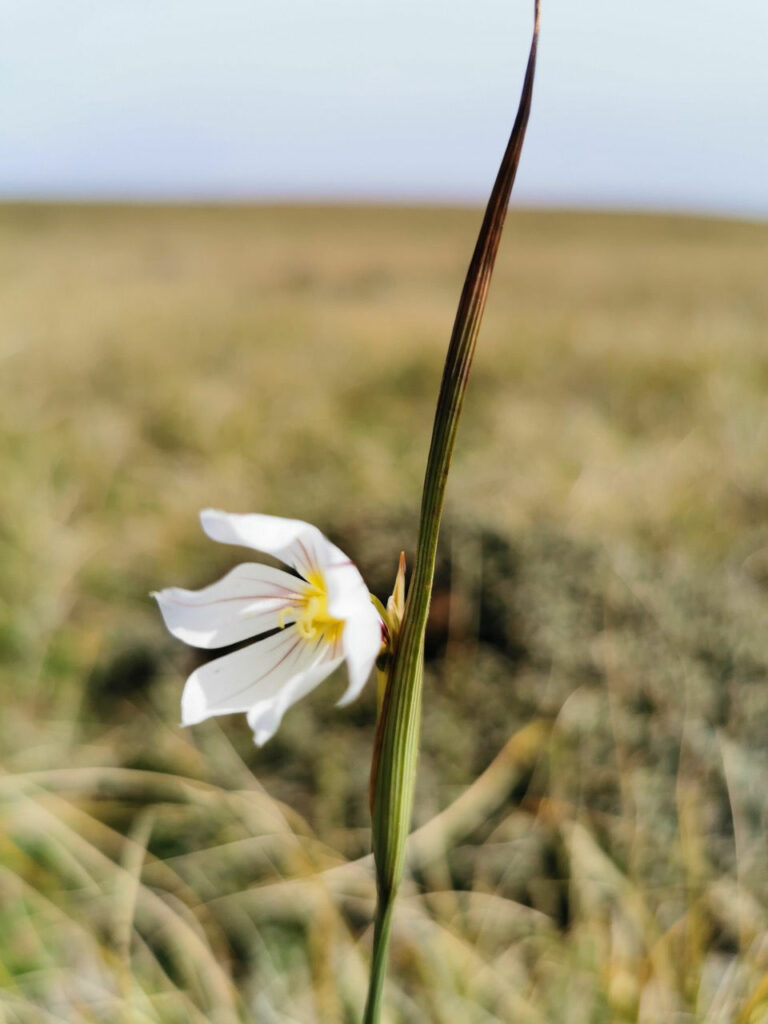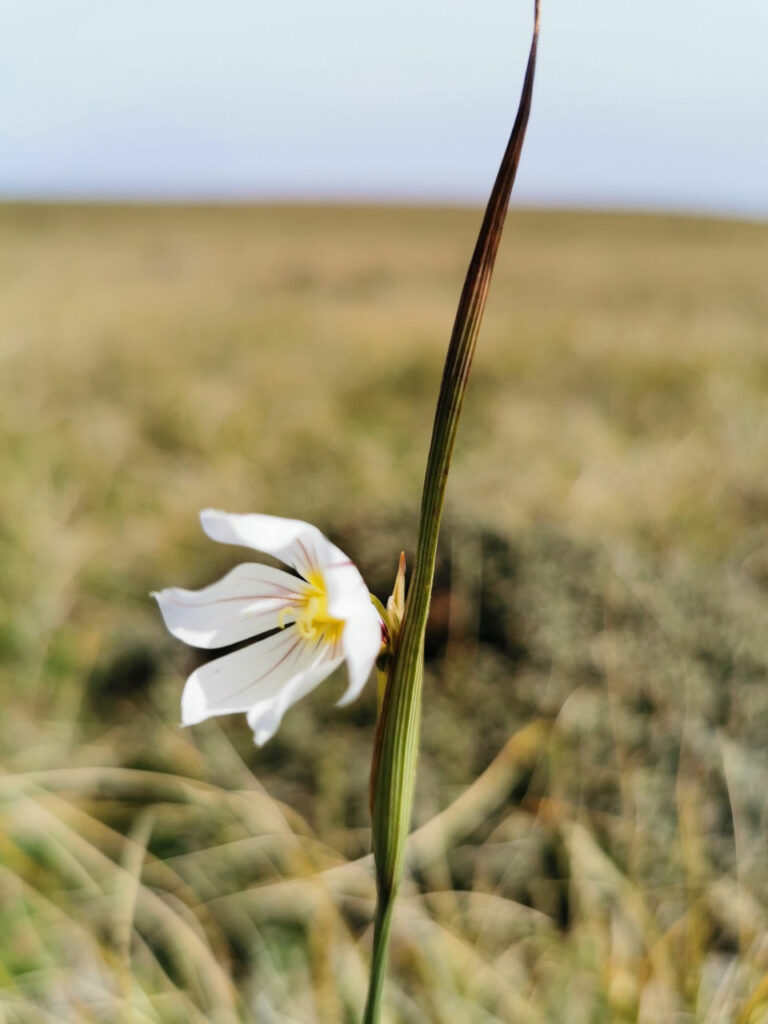
Falkland Islands
The Pale Maiden
Olsynium filifolium

General Description / Cultural Significance
The Pale Maiden, or Olysnium filifolium, is the national flower of the Falkland Islands and native to the country. It is sweet-smelling, growing bell-shaped pale purple petals. It is the only iris species native to the Falkland Islands. It blooms from late spring to early summer and is beloved by the people who live there for its beauty and sweet scent.
Climate Change/Conservation Status
In 2016, scientists predicted the Falklands will have up to a 2.2 degrees Celsius rise in mean annual temperature, with no increase in the already limited rainfall in the coming century. This will not only cause additional radical range contraction for the Pale Maiden, but there are many plant species that have already begun to decline. Additionally, there are no solutions for upland plants that have nowhere to migrate.
The melting of Antarctic ice and subsequent cooling of the ocean around the Falkland Islands is threatening the economy of the country, causing changes in fishing, agriculture, and wildlife tourism. Tourists pay to travel to the Falkland Islands and see such wildlife as penguins, and animals like that are increasingly losing their natural habitats due to increasing temperatures.
Management strategy at this time is to retain as much biodiversity as possible in order to aid resilience and sustain ecosystems by cutting controllable stresses such as livestock grazing, erosion and other factors.
The Pale Maiden was once widely distributed on the island, but is no longer as common as it was. The native iris prefers open shrub-like habitats such as heath ecosystems that can be heavily grazed and compromised by livestock. Although, this may not be the only reason for the plant’s decline.
Alternate Names
Bermudiana filifolia
Blue-eyed grass

